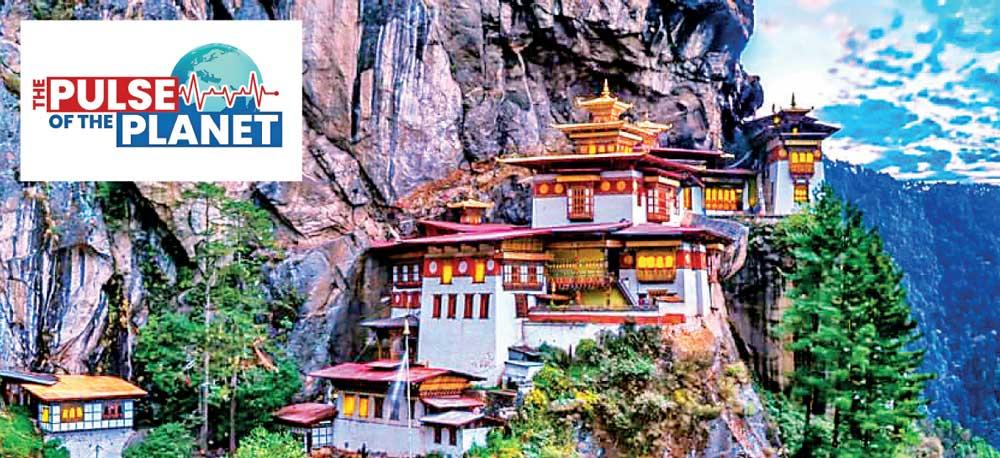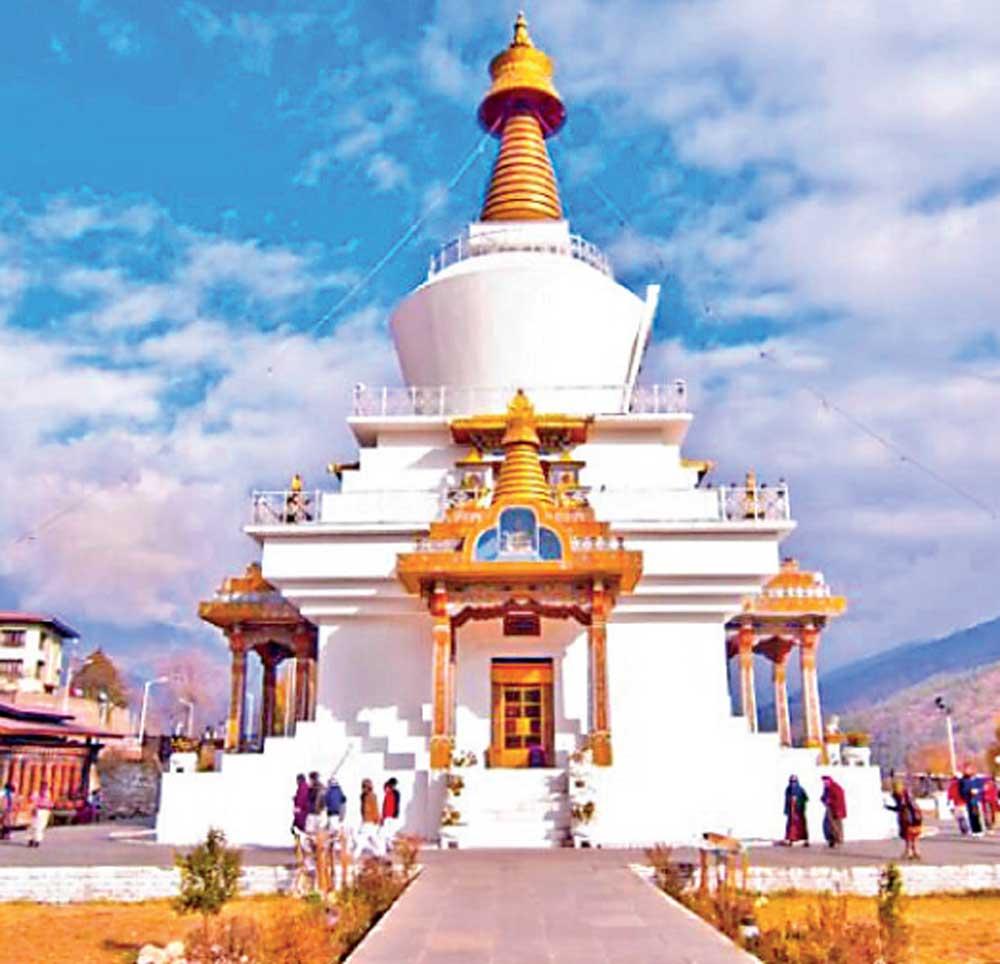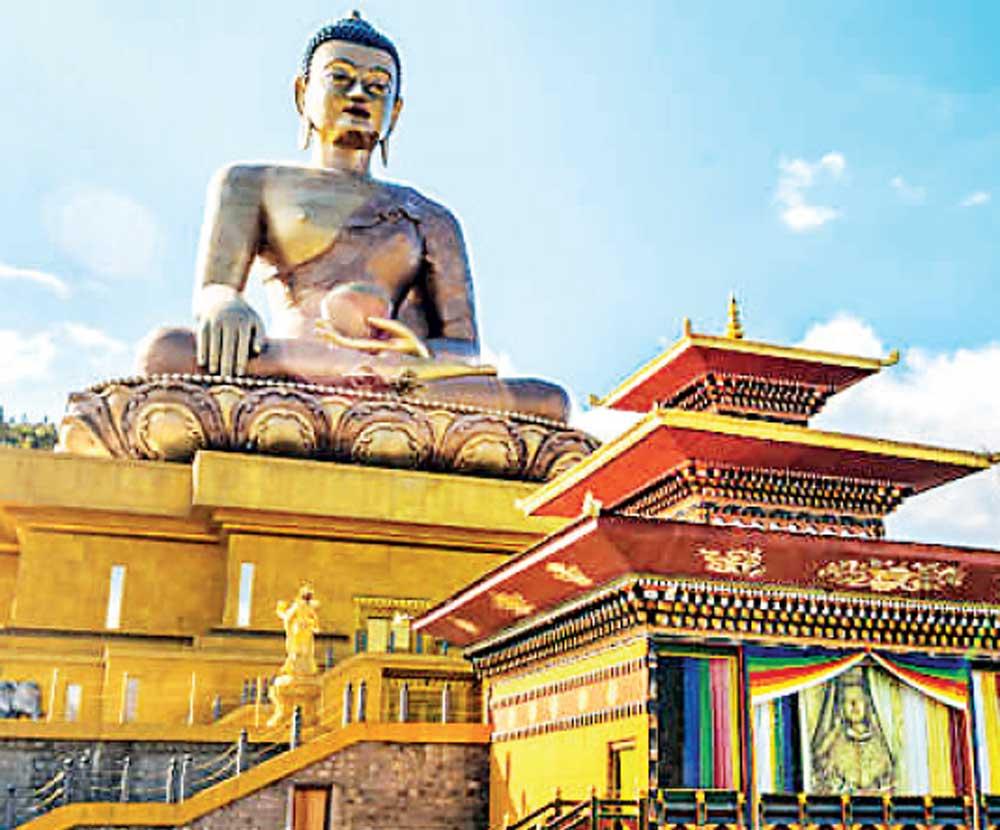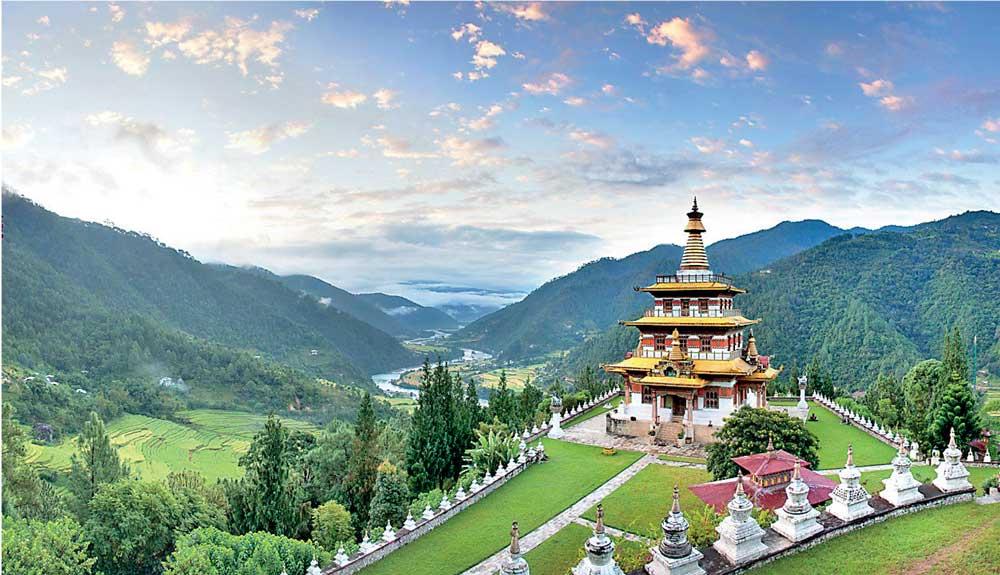
Bhutanese culture is deeply rooted in Mahayana Buddhism, and the country’s architecture, traditions, and daily life are all imbued with spiritual significance
Imagine a place where towering snow-capped mountains meet lush green valleys, where vibrant monasteries cling to cliff sides, and where happiness is a national priority. Welcome to Bhutan, one of the world’s most fascinating and mysterious destinations. Nestled high in the eastern Himalayas, Bhutan is not just another picturesque country; it’s a place where natural beauty, rich culture, and spiritual wisdom come together to create something truly unique.
While it’s often overlooked by travellers in favour of more famous destinations like India or Nepal, Bhutan is a hidden gem that is quietly changing the way the world thinks about happiness, sustainability, and the future of travel. Let’s take a journey through Bhutan where adventure, peace, and enlightenment await.
Bhutan is like a treasure chest tucked away in the heart of the Himalayas. This small but spectacular kingdom stretches across roughly 38,394 square kilometres, making it a bit smaller than Switzerland, but don’t let the size fool you. The country’s landscape is nothing short of awe-inspiring, with dramatic mountain peaks, deep valleys, and verdant forests that stretch as far as the eye can see.
The towering Himalayas dominate the northern part of the country, with peaks that seem to kiss the sky. At the top of this mountain range is Gangkhar Puensum, Bhutan’s highest peak, standing proudly at 7,570 meters (24,836 feet).
This majestic mountain has remained untouched by climbers; an unspoken rule that honours the belief that the spirits living there should not be disturbed.
The stunning views from these highlands are a photographer’s dream, offering sweeping panoramas of snow-covered ridges and lush valleys below.
Then there are the valleys; Paro, Punakha, and others that are so serene they feel like they’re straight out of a fairy-tale. Imagine walking through terraced rice fields, breathing in the crisp mountain air, and hearing the distant murmur of rivers as they carve their way through the valleys. It’s a place where nature’s beauty feels untouched and pure, preserved with care for generations to come. Bhutan isn’t just a visual feast; it’s also a spiritual haven. Bhutanese culture is deeply rooted in Mahayana Buddhism, and the country’s architecture, traditions, and daily life are all imbued with spiritual significance. If you’re looking for a place where mindfulness and meditation are more than just buzzwords, Bhutan is it.

One of the most iconic spots in Bhutan is the Tiger’s Nest Monastery (Paro Taktsang), which is perched on a cliff 3,120 meters (10,240 feet) above the Paro Valley. The hike to this sacred site is a challenge but the reward is worth every step. As you climb, you’ll pass through forests of pine trees, cross stone bridges, and be greeted by prayer flags fluttering in the wind. At the top, the sight of the monastery nestled in the cliffside, with its golden roofs shining in the sun, is nothing short of magical. Legend has it that the Guru Padmasambhava, the founder of Tibetan Buddhism, meditated here in the 8th century and ever since, the site has been a symbol of spiritual power.
But it’s not just about the monasteries and mountain-top temples. Bhutan’s dzongs; fortress-like structures that serve as both religious centres and government buildings are an essential part of the country’s architectural and cultural identity. The Punakha Dzong, one of the most beautiful in Bhutan, stands at the confluence of two rivers, its whitewashed walls and golden roofs glowing against the backdrop of the Himalayas. These dzongs are not just places of worship but also symbols of the strength and resilience of Bhutanese culture.
Now, here’s where things get really interesting. Bhutan is famous for something unique in the world: its commitment to Gross National Happiness (GNH). Instead of focusing on GDP and economic growth like most other countries, Bhutan measures its success by the well-being and happiness of its people.

The concept was introduced in the 1970s by Bhutan’s fourth king, Jigme Singye Wangchuck. He argued that the true measure of a country’s success isn’t how much money it makes, but how happy and content its citizens are. And so, GNH was born. This ground-breaking idea is based on four pillars: sustainable development, conservation of the environment, preservation of culture, and good governance. Essentially, it’s about creating a balance between economic progress, environmental preservation, and the well-being of the people. Imagine living in a country where happiness and contentment are more important than material wealth. In Bhutan, this philosophy guides everything. From the way the government operates to the way people live their daily lives. The country’s low levels of industrialization and development are not seen as drawbacks; rather, they are a reflection of Bhutan’s commitment to sustainability. By protecting its natural environment and maintaining traditional values, Bhutan has created a society where people enjoy a high quality of life without the chaos and stress that often accompany modernization.
For those lucky enough to visit Bhutan, the experience is like no other. The country has adopted a “high-value, low-impact” tourism policy, meaning that only a limited number of tourists are allowed to enter each year. It’s a careful approach designed to protect Bhutan’s natural and cultural treasures from being overwhelmed by mass tourism.
Tourists are required to book their trips through licensed tour operators, and a daily fee covers everything. Accommodation, meals, transportation, and a government tax. This ensures that tourism contributes to the country’s economy without negatively impacting the environment or society. But this isn’t just about limiting numbers. It’s about creating a richer, more meaningful experience for travellers.
If you visit, you’ll notice something special: the atmosphere. Bhutan feels different from other destinations because it hasn’t been spoiled by overt commercialism.
The pace is slower, the people are kinder, and the landscape is unspoiled. Whether you’re hiking to the Tiger’s Nest Monastery, attending a colourful religious festival, or simply strolling through a village, you’ll find that the Bhutanese people are happy to share their culture with you but only if you respect and appreciate it.
Of course, Bhutan is not without its challenges. The country’s remote location, vulnerability to climate change, and limited resources make it a difficult place to develop. The melting of glaciers in the Himalayas threatens the water supply for many rural communities, and like many countries, Bhutan faces the challenges of balancing tradition with modernity.

But despite these challenges, Bhutan remains a beacon of hope. Its commitment to sustainability, happiness, and cultural preservation offers a glimpse into a future where development doesn’t come at the expense of the planet or its people.
Bhutan is a place of contradictions and wonders. It’s a country where ancient traditions coexist with modern ideas. Where the pursuit of happiness is more important than economic growth. Where nature is revered and protected. In a world increasingly driven by materialism and rapid development, Bhutan offers a refreshing alternative; a reminder that true wealth lies in the intangible things: peace, happiness, and a deep connection to the world around us.
If you’re looking for a destination that will not only wow you with its natural beauty but also leave you thinking deeply about the kind of world we want to build, Bhutan is the place to go.
It’s not just a trip; it’s an experience that will change the way you view the world.











